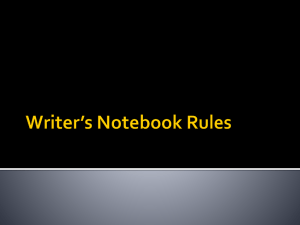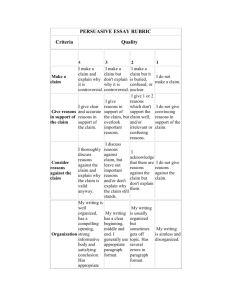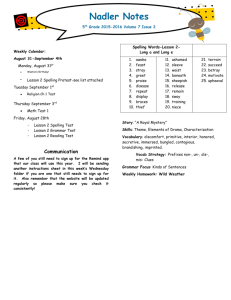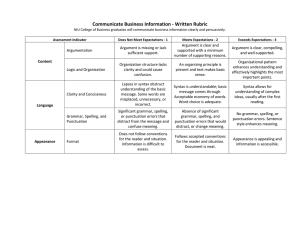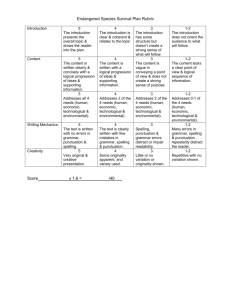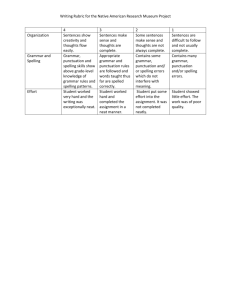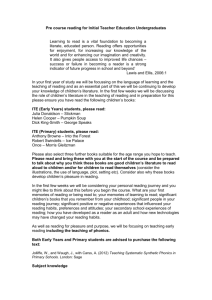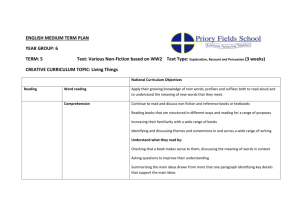Marking Deaf Students` Work
advertisement
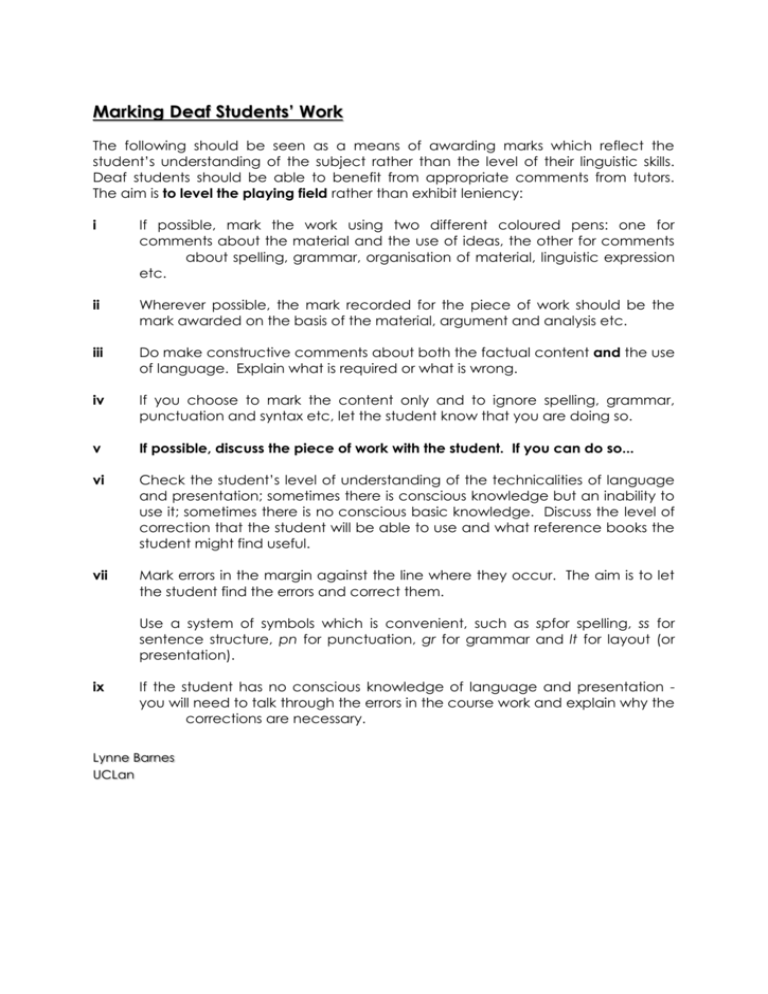
Marking Deaf Students’ Work The following should be seen as a means of awarding marks which reflect the student’s understanding of the subject rather than the level of their linguistic skills. Deaf students should be able to benefit from appropriate comments from tutors. The aim is to level the playing field rather than exhibit leniency: i If possible, mark the work using two different coloured pens: one for comments about the material and the use of ideas, the other for comments about spelling, grammar, organisation of material, linguistic expression etc. ii Wherever possible, the mark recorded for the piece of work should be the mark awarded on the basis of the material, argument and analysis etc. iii Do make constructive comments about both the factual content and the use of language. Explain what is required or what is wrong. iv If you choose to mark the content only and to ignore spelling, grammar, punctuation and syntax etc, let the student know that you are doing so. v If possible, discuss the piece of work with the student. If you can do so... vi Check the student’s level of understanding of the technicalities of language and presentation; sometimes there is conscious knowledge but an inability to use it; sometimes there is no conscious basic knowledge. Discuss the level of correction that the student will be able to use and what reference books the student might find useful. vii Mark errors in the margin against the line where they occur. The aim is to let the student find the errors and correct them. Use a system of symbols which is convenient, such as spfor spelling, ss for sentence structure, pn for punctuation, gr for grammar and lt for layout (or presentation). ix If the student has no conscious knowledge of language and presentation you will need to talk through the errors in the course work and explain why the corrections are necessary. Lynne Barnes UCLan

